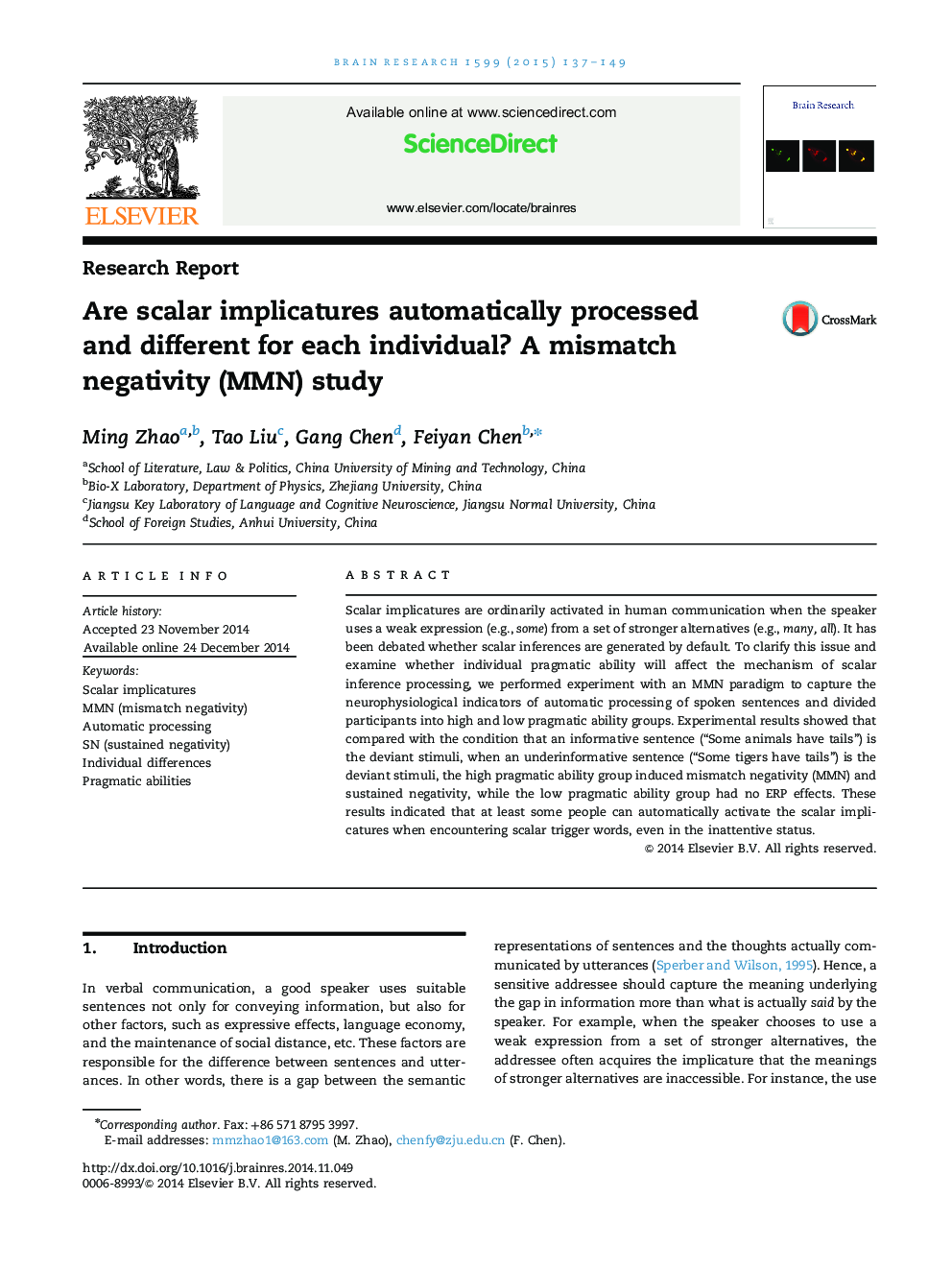| کد مقاله | کد نشریه | سال انتشار | مقاله انگلیسی | نسخه تمام متن |
|---|---|---|---|---|
| 4323930 | 1613840 | 2015 | 13 صفحه PDF | دانلود رایگان |

• This MMN paradigm study examines the mechanism underlying scalar inferences.
• Informative (I) and underinformative (U) sentences were used as stimuli.
• Participants were divided into low (L) and high (H) pragmatic ability groups.
• The MMN and SN were elicited only in the H group when the U sentence served as a deviant stimulus.
• The automatic processing of scalar inferences varies from individual to individual.
Scalar implicatures are ordinarily activated in human communication when the speaker uses a weak expression (e.g., some) from a set of stronger alternatives (e.g., many, all). It has been debated whether scalar inferences are generated by default. To clarify this issue and examine whether individual pragmatic ability will affect the mechanism of scalar inference processing, we performed experiment with an MMN paradigm to capture the neurophysiological indicators of automatic processing of spoken sentences and divided participants into high and low pragmatic ability groups. Experimental results showed that compared with the condition that an informative sentence (“Some animals have tails”) is the deviant stimuli, when an underinformative sentence (“Some tigers have tails”) is the deviant stimuli, the high pragmatic ability group induced mismatch negativity (MMN) and sustained negativity, while the low pragmatic ability group had no ERP effects. These results indicated that at least some people can automatically activate the scalar implicatures when encountering scalar trigger words, even in the inattentive status.
Journal: Brain Research - Volume 1599, 2 March 2015, Pages 137–149